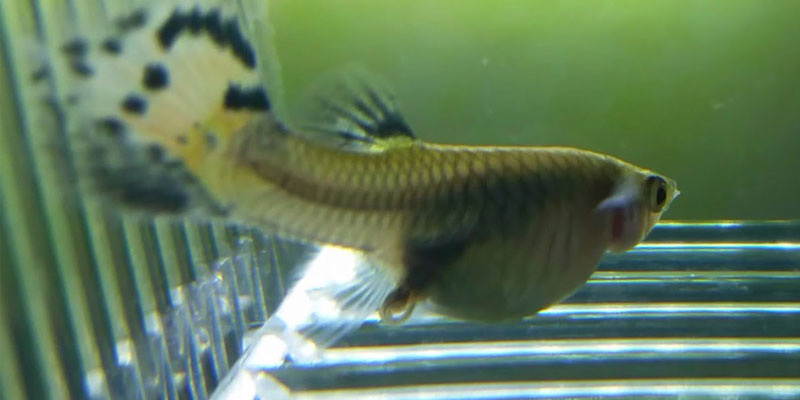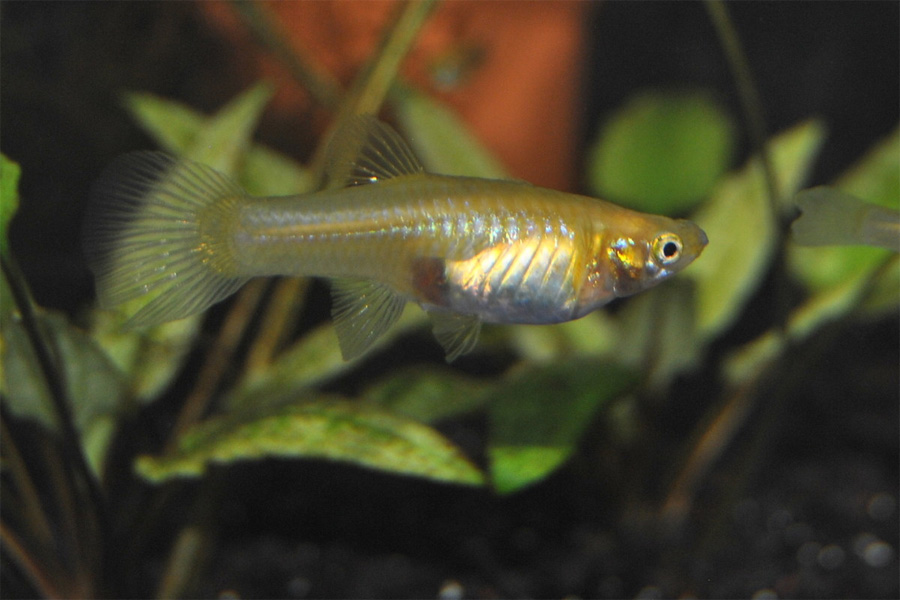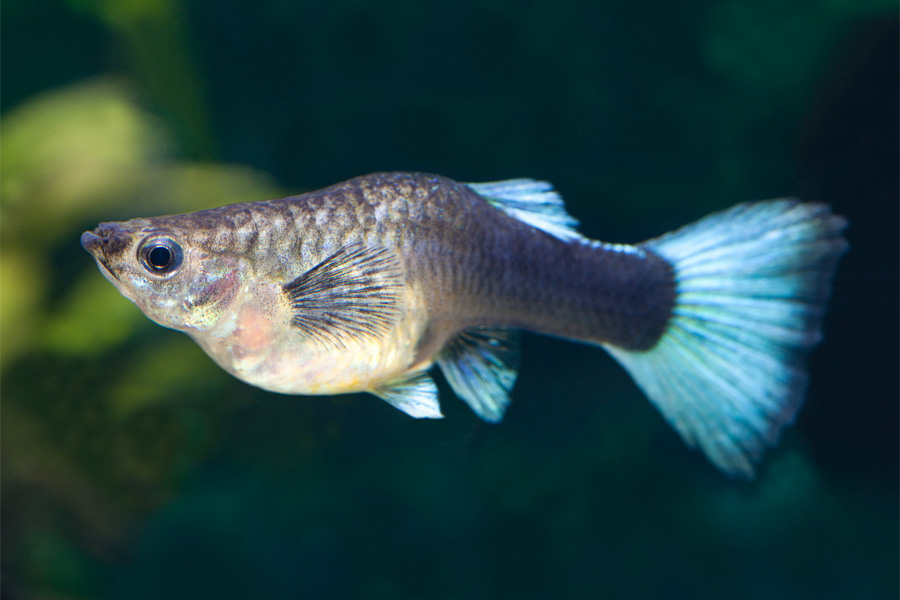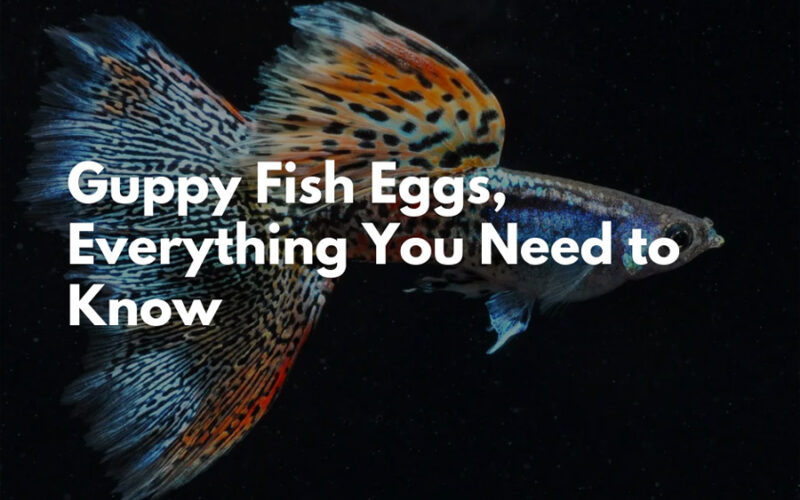Guppy, also known as rainbow fish, is one of the favorite pets among fish enthusiasts. They are fairly easy to maintain, not to mention they are visually pretty. And if you’ve decided to keep guppies, chances are you’re going to ask if guppies lay eggs or give live birth.
No, this isn’t a silly question especially if you’re a new guppy keeper. Guppies are live-bearer which means they give birth to their fry instead of laying eggs. The eggs grow and hatch in the belly of female guppies before the fry are released from their mother’s body and swim by themselves.
The gestation period typically takes about 21 to 30 days. When the female guppies are ready to give birth, you can notice her gravid spot deep black or dark maroon. A female guppy can give birth to 120 guppy fry in 6 hours, depending on the individual.
What’s interesting is that not all fry can survive. It’s most likely the fry will be eaten by their mother or other fish in the tank. So, it’s suggested to move these little guppy babies to an isolated tank until they grow enough.
Some fish keepers notice that their guppies lay eggs. Some factors lead to this condition. Read on and find the answer.
Why Guppies Look Like Laying Eggs?

Guppy fish eggs hatch inside the womb so technically female guppies are not laying eggs. But in some cases, you may notice eggs coming out from the guppy mother’s belly. This happens for some reason. Here are why your guppies laying eggs.
Fry Are Not Properly Formed
When you find that your guppy lays eggs, it could be fry that hasn’t formed properly. They remain in their eggs and they are released with another fry. This is quite similar to miscarriage in humans.
That becomes the question, can the eggs hatch outside the body of the female guppy?
Yes, it may hatch outside the body but the fry is probably not strong enough to survive. There’s nothing you can do with the eggs except wait until it hatches by itself. If you’re lucky, you’ll see something moving inside the eggs.
Eggs That Never Formed
Pregnant guppies are susceptible to stress, especially when the environment isn’t good enough—dirty water, high level of ammonia, active tank mate, etc. Stress during gestation can lead to several problems, including eggs that never formed.
When guppy eggs never form into fry, female guppy will release it like eggs. That’s when you notice that your guppy fish lays eggs—these eggs won’t hatch. Fortunately, you can reduce the chance of eggs never forming by maintaining a friendly environment for your guppies.
Eggs Weren’t Fertilized
In some cases, you may find eggs drop as your guppy releases her fry or after. These could be unfertilized eggs that can’t form into fry. If you found this, immediately scoop these eggs out of the tank.
Since the eggs are not fertilized, they won’t hatch. Leaving the eggs inside your tank will increase the level of ammonia as they decay.
How Guppy Eggs Are Produced

Guppies are productive live-bearers. With a relatively short gestation period, reproduction continues through the year—even female guppies will be ready for conception shortly after labor. While mating, male guppy displays its courtship and female guppy shows receptive behavior.
The male will insert gonopodium (tubular anal fin) into the genital pore of the female guppy for internal fertilization. The sperm will be stored in ovaries and gonoducts—it can fertilize up to 8 months. That’s why a female guppy can give birth after the male is dead.
How many eggs does a guppy lay? While it’s unclear how many eggs a female guppy can produce in one conception, it can release fry somewhere between 30 and 200. A guppy fry is just about 0.25 inches at birth and it takes months to reach 1.5 inches.
Although it’s a big range, only a few of them can survive. Unlike egg layers, live-bearer don’t exhibit parental care. If female guppies are in the same tank as the fry, they don’t have a problem eating their fry. Not to mention other inhabitants will also consider them as food.
Also read: Getting to know Guppy diseases and how to treat them.
How to Tell Your Guppies Are Going to Give Birth

To get to know more about guppy reproduction, it’s important to take a closer look at signs and things guppies often do before giving birth. Knowing this, of course, helps you figure out if your guppies are going to give birth to their fry. Here are the most common things you need to know about guppy labor.
Extra Large Belly
This is one of the easiest signs to tell if your guppy is going to give birth. Check on the female’s abdomen and when you find it looks like the belly is going to explode, chances are that the labor is near. It also may look boxy.
What do guppy eggs look like? Guppy eggs look like typical fish eggs with a tiny size, that’s why the abdomen can load hundreds of eggs.
Gravid Spot Turns Black or Maroon
Another way to tell if your guppy is ready to give birth is to look at the gravid spot. The gravid spot, also known as the anal spot, is a spot near the butt of a guppy. When the female guppy is going to give birth, this spot turns dark maroon, or black.
Change Eating Habit
This is not normal behavior but it’s not uncommon in pregnant guppies during their labor. When you notice a change in eating habits and other signs of labor, it means the female guppies are ready to labor.
The change in eating habits vary. While some guppies refuse to eat, others spit out their food. But don’t worry, this won’t harm your guppies and the eating habit will be back to normal.
Give Birth at Night
Like most livebearers, guppies give birth at night. When the time comes, a female guppy hides between plants and stays in a corner of your tank. When you notice your pregnant guppies do this behavior, it means they are in labor and they are ready to give birth.
Don’t disturb them. Leave your guppies alone until the labor process is finished. Once the fry is released, its behavior will be back to normal.
As soon as their fry is released, guppies may start eating their babies. If you don’t want this, separate the female guppy before birth. Alternatively, keep live plants that will allow fry to hide from other tank inhabitants.
Stay at the Bottom of the Tank
Another unique behavior during the labor is guppy stays at the bottom of the tank. Female guppies lie on the floor of the tank and find a hiding place to give birth, for instance in the corner. They will stay there until the fry is released.
To provide a stress-free delivery, it is a good idea to use a breeding box or breeding tank. Move the female guppy into a separate tank, so other fish won’t disturb the labor. Besides, it’s also a great idea to keep the babies safe.
To recap, guppies are live-bearers which means they are not laying eggs. Their eggs grow in the belly of female fish and they hatch just before the fry is released. With all of this information, you’ll be ready to be a guppy fish keeper.



